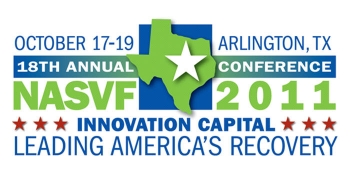Guest blog post by U.S.
Assistant Secretary of Commerce for Economic Development John Fernandez
Between March and May of 2010, severe storms and floods devastated many parts of Tennessee, Kentucky, Nebraska and Rhode Island. While Commerce’s Economic Development Administration (EDA) is not a first responder to such disasters, the agency quickly got to work assessing the damage and connecting with local leaders regarding their needs as they began to pick up the pieces and rebuild. Recognizing the critical role that EDA can play for these communities, Congress provided $49 million in supplemental funding for EDA to award to these states to help them in their recovery efforts.
Last week, businesses in Tennessee got some good holiday news, when EDA announced its investment of $5.8 million to help build critical infrastructure to support Tennessee businesses and jobs and to develop a strategic marketing strategy to grow the Nashville hospitality sector following the floods of 2010.
These grants will assist in Tennessee’s recovery and redevelopment efforts by funding the necessary improvements that will ensure the resilience of physical and economic infrastructure and include:
- $2 million to the Jackson Energy Authority to build core sewer infrastructure to protect major regional employers, including the Jackson-Madison Hospital and numerous industrial and manufacturing businesses, from flooding. The project is expected to result in the retention of 9,690 jobs, according to grantee estimates;
- $1.49 million to the city of Dyersburg to help build an elevated water storage tank that will improve water capacity for manufacturing and industrial businesses and will serve new tracts of land being developed outside of the flood plain to accommodate business needs. The project is expected to save 433 jobs, create 200 jobs and generate $4 million in private investment, according to grantee estimates;
- $1.3 million to Conexion Americas of Nashville to help build the Casa Azafran Community Center, which will provide expanded business startup or expansion assistance to Latino small business owners and aspiring entrepreneurs;
- $1 million to the Nashville Convention & Visitors Bureau to implement a regional marketing strategy that will support the city’s economic recovery by promoting the hospitality industry, which lost hundreds of millions of dollars in the wake of the flooding that impacted the city in 2010.
In announcing the grant, U.S. Commerce Secretary John Bryson said “The Obama administration is committed to helping communities impacted by natural disasters rebuild stronger and smarter to protect businesses and jobs. These critical EDA investments will provide the infrastructure needed to help keep businesses running and workers productive in the event of future floods, expand vital business assistance to Nashville’s Latino community and help Nashville revitalize its critical hospitality sector to create new jobs.”
In May 2010, President Obama signed the Tennessee Disaster Declaration and ordered Federal aid to supplement state and local recovery efforts in the area struck by severe storms, flooding, straight-line winds, and tornadoes beginning on April 30, 2010, and continuing. The president's action made Federal funding available to help individuals and business owners recover from the effects of the disaster.










